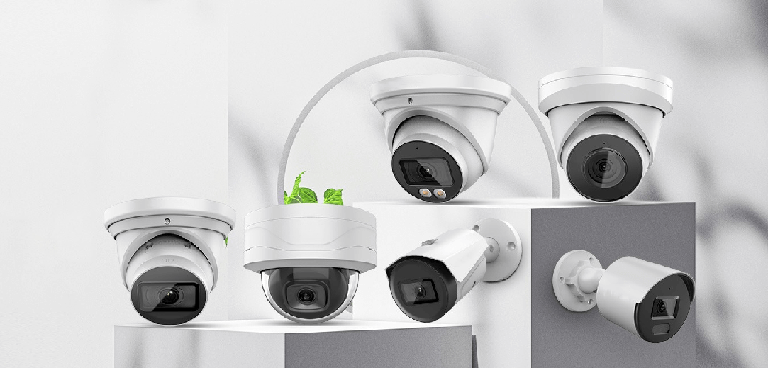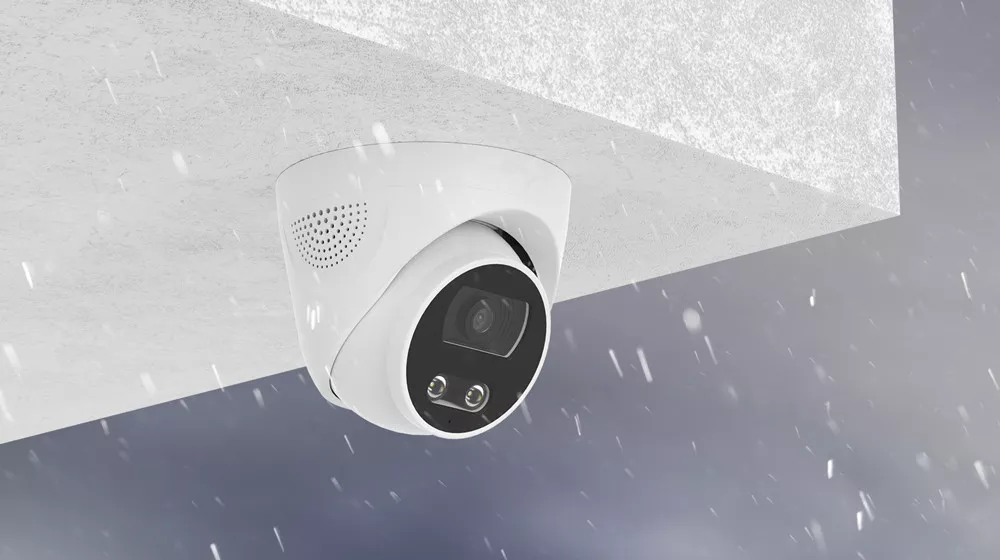عند البحث عن كاميرا PoE IP، غالبًا ما يواجه المشترون خيارات مربكة بمواصفات تقنية قد تكون مربكة. يعمل هذا الدليل على تبسيط عملية الاختيار، مما يساعدك على فهم الميزات الأكثر أهمية لمتطلباتك الأمنية المحددة دون إهدار المال على قدرات غير ضرورية. دعنا الآن نستكشف كل جانب من جوانب كاميرات PoE IP الحاسمة لمساعدتك على الاستثمار المستنير في نظام الأمان الخاص بك.
ما هي تقنية PoE ولماذا يجب أن تفكر فيها؟
قد يبدو فهم تقنية PoE معقدًا في البداية، ولكنني وجدت أنها تغير قواعد اللعبة في كاميرات المراقبة التركيبات. الطاقة عبر الإيثرنت ليست مجرد مصطلحات تقنية، بل هي حل عملي يجمع بين توصيل الطاقة ونقل البيانات من خلال كابل إيثرنت واحد.
في سنواتي تثبيت الأمان لقد رأيت عن كثب كيف أن تقنية PoE تقضي على البحث المحبط عن منافذ الطاقة بالقرب من الكاميرات المثبتة في السقف. تستفيد هذه التقنية من معايير IEEE 802.3 (وتحديداً 802.3af و802.3at و802.3bt) لتوفير طاقة تتراوح بين 15 واط و90 واط من الطاقة حسب المعيار المستخدم.
لماذا تختار PoE على البدائل؟ عامل الموثوقية وحده يجعله تستحق الدراسة. على عكس الأنظمة اللاسلكية التي تعاني من التداخل وانخفاض الإشارة، توفر توصيلات PoE ثباتًا قويًا مع نطاق ترددي ثابت. في JER-Tech، لاحظنا انخفاض عدد مكالمات الخدمة لأنظمة PoE بشكل ملحوظ مقارنة بنظيراتها اللاسلكية.
| معيار PoE | ناتج الطاقة | الدعم النموذجي للكاميرا |
|---|---|---|
| 802.3af (PoE) | 15.4W | الكاميرات الثابتة الأساسية |
| 802.3at (PoE+) | 30W | كاميرات PTZموديلات ساخنة |
| 802.3bt (PoE++) | 60-90W | كاميرات التحليلات المتقدمة، وأجهزة الإضاءة |
يمكن أن تكون وفورات التكلفة كبيرة أيضًا. لقد حسبت أن التخلص من البنية التحتية المنفصلة للطاقة يمكن أن يقلل من تكاليف التركيب بنسبة 30-50%، خاصة في عمليات النشر الكبيرة. بالإضافة إلى ذلك، فإن مركزية الطاقة من خلال مفتاح PoE يوفر ميزة إضافية تتمثل في كاميرا عن بُعد إعادة التشغيل - لا مزيد من تسلق السلالم لتشغيل الأجهزة التي تواجه مشاكل! هل لديك أسئلة حول تطبيق PoE في بيئتك الخاصة؟ تواصل مع فريقنا للإرشاد الشخصي

كيف تؤثر أنواع الكاميرات على تغطيتك الأمنية؟
بعد إعداد اتصال PoE لـ نظام الأمان، القرار الحاسم التالي هو اختيار نوع الكاميرا. على مدار أكثر من 15 عامًا من التركيبات الأمنية في JER-Tech، تعلمت أن عوامل شكل الكاميرا تؤثر بشكل كبير على فعالية المراقبة.
الكاميرات الثابتة هي كاميرات ثابتة للمراقبة الثابتة لمناطق محددة - مثالية للمداخل أو مناضد الخروج أو أرصفة التحميل حيث لا يتغير تركيزك الأمني أبدًا. إنها فعّالة من حيث التكلفة ولكنها محدودة بزاوية تركيبها.
هل تحتاج إلى مرونة دون أن تكلفك الكثير من المال؟ متغيرة البؤرة توفر الكاميرات أرضية وسطية. أثناء التثبيت، يمكنك ضبط زاوية العرض بدقة، ثم تثبيتها في مكانها - لا توجد أجزاء متحركة يجب صيانتها ولكن لا يزال من الممكن تخصيصها حسب احتياجاتك الدقيقة.
PTZ (تكبير-إمالة-تقريب) تعمل الكاميرات كأدوات متعددة الاستخدامات في مجال الأمن عمليات النشر. غالباً ما أوصي بها للعملاء الذين يراقبون مناطق كبيرة مثل مواقف السيارات أو المستودعات. تسمح قدرات التحكم عن بُعد لموظفي الأمن بتتبع النشاط المشبوه في الوقت الفعلي، وإن كان ذلك بضعف تكلفة الطرازات الثابتة تقريباً.
| نوع الكاميرا | أفضل تطبيق | |
|---|---|---|
| قبة ثابتة | داخلية، رادعة، مقاومة للتخريب، مقاومة للتخريب | |
| الرصاصة | رؤية خارجية بعيدة المدى | |
| توريت/عينيه | داخلي/خارجي، وضع قابل للتعديل | |
| بي تي زد | المناطق الكبيرة التي تتطلب مراقبة نشطة |
عامل الشكل مهم أيضًا - القبة كاميرات توفر مراقبة سرية مع مقاومة للتخريب، بينما توفر الكاميرات ذات الرصاص حماية أفضل من الطقس والردع المرئي. بالنسبة لأولئك الذين يريدون أفضل ما في العالمين، وجدتُ أن الكاميرات البرجية توفر مرونة ممتازة بدون مشاكل انعكاس الأشعة تحت الحمراء التي تعاني منها أحياناً نماذج القبة. لست متأكداً من النوع الذي يناسب بيئتك؟ تواصل مع خبراء الأمن لدينا لإجراء تقييم شخصي
ما هي ميزات الدقة وجودة الصورة التي توفر أفضل اللقطات؟
والآن بعد أن غطينا أنواع الكاميرات، دعونا نتحدث عن الدقة - وهي منطقة يختلط فيها الأمر على العديد من مشتري كاميرات المراقبة. لقد رأيت عددًا لا يحصى من العملاء في JER-Tech التركيز على الميجابكسل وحده، ولكن هناك الكثير مما يتعلق بجودة الصورة أكثر من مجرد هذا الرقم.
تحدد الدقة بشكل أساسي التفاصيل التي يمكنك استخراجها من اللقطات. من واقع خبرتي تركيب آلاف الكاميرات، دقة 4 ميجابكسل (2K) تصل إلى النقطة المثالية لمعظم التطبيقات، مما يوفر وضوحًا كافيًا لتحديد الأفراد مع الحفاظ على عرض النطاق الترددي ومتطلبات التخزين معقولة. بالنسبة للاحتياجات المتخصصة مثل التعرف على لوحات الترخيص، تصبح دقة 8 ميجابكسل (4K) ضرورية، على الرغم من أنني أقترح النشر المستهدف بدلاً من التنفيذ على مستوى النظام.
معدل الإطارات مهم بنفس القدر، ولكن غالبًا ما يتم تجاهله. ليس هناك ما هو أكثر إحباطًا من مراجعة اللقطات المهمة فقط لتكتشف أن اللحظة الحاسمة حدثت بين الإطارات! يضمن لك الحد الأدنى 30 إطارًا في الثانية تشغيلًا سلسًا ويضمن لك عدم تفويت تفاصيل مهمة أثناء الحركات السريعة.
| القرار | أفضل تطبيق | تأثير التخزين |
|---|---|---|
| 2 ميجابكسل (1080 بكسل) | المراقبة الأساسية وقيود الميزانية | منخفضة |
| 4 ميجابكسل (2K) | الأمن العام والتعرف على الوجه | متوسط |
| 8 ميجابكسل (4K) | لوحات الترخيص، تفاصيل الطب الشرعي | عالية |
تؤثر ظروف الإضاءة بشكل كبير على أداء الكاميرا بغض النظر عن الدقة. وهنا تصبح تقنية WDR (النطاق الديناميكي العريض) لا تقدر بثمن، خاصةً في المداخل أو المواقع ذات الإضاءة الخلفية. أوصي عادةً بقدرة 120 ديسيبل WDR كمعيار لبيئات الإضاءة الصعبة.
بالنسبة لاحتياجات الرؤية الليلية، لا تكتفِ بالتحقق من مواصفات مسافة الأشعة تحت الحمراء. فجودة إضاءة الأشعة تحت الحمراء مهمة للغاية. هل لديك أسئلة محددة حول متطلبات الدقة لبيئتك الفريدة؟ يمكن لفريقنا المساعدة تحديد التوازن الأمثل بين الالتقاط التفصيلي وكفاءة النظام.

ما هي تصنيفات مقاومة الطقس والمتانة المهمة للتركيب الخاص بك؟
وبعيداً عن الدقة ونوع الكاميرا، غالباً ما تحدد المتانة البيئية ما إذا كان نظامك يزدهر أو يفشل. لقد رأيت الكثير من العملاء في JER-Tech تعلّم هذا الدرس بالطريقة الصعبة - شراء كاميرات ذات مواصفات مذهلة ولكن غير مقاومة للعوامل الجوية بشكل كافٍ، فقط لاستبدالها في غضون أشهر.
دعونا نفك شفرة تصنيفات IP المربكة هذه. يشير الرقم الأول إلى الحماية من الغبار (0-6)، بينما يشير الرقم الثاني إلى مقاومة الماء (0-9). بالنسبة للتركيبات الخارجية، لا أوصي أبدًا بأي شيء أقل من IP66. وإليك السبب: يضمن IP66 الحماية الكاملة من الغبار والمقاومة الكاملة ضد نفاثات المياه القوية، وهو ما يكفي لمعظم التطبيقات السكنية والتجارية المعرضة للأمطار والثلوج.
| تصنيف IP | مستوى الحماية | البيئات المناسبة |
|---|---|---|
| IP66 | نفاثات مياه قوية ومحكمة الغبار | المناطق الخارجية المغطاة القياسية في الهواء الطلق |
| IP67 | محكم الغبار، غمر مؤقت | المناطق المعرضة للفيضانات، وهطول الأمطار الغزيرة |
| IP68 | محكم الغبار، الغمر المستمر | التطبيقات البحرية، مناطق الغسيل |
إن تحمل درجة الحرارة أمر بالغ الأهمية بنفس القدر ولكن كثيراً ما يتم تجاهله. حتى أفضل كاميرا IP68 ستفشل حتى إذا تجاوزت درجات الحرارة نطاقها التشغيلي. بالنسبة للمناخات القاسية، ابحث عن الموديلات المصنفة على الأقل من -22 درجة فهرنهايت إلى 140 درجة فهرنهايت، مع سخانات مدمجة للمناطق شديدة البرودة.
في المناطق المعرضة للعبث (المدارس والأماكن العامة والمرتفعات التي يمكن الوصول إليها)، أوصي بالاستثمار في الكاميرات ذات التصنيف IK10. ويعني هذا التصنيف أن الغلاف يمكن أن يتحمل صدمات تعادل مطرقة بوزن 5 كجم - قد يتلفها مخرب مصمم في نهاية المطاف، ولكن ليس بدون جهد ووقت كبيرين.
هل أنت غير متأكد من الحماية البيئية التي تتطلبها منشأتك؟ تواصل مع فريقنا للحصول على تقييم خاص بالموقع - سنساعدك على تجنب الخطأ المكلف المتمثل في عدم حماية استثمارك بشكل كافٍ.
ما مدى أهمية الميزات المتقدمة مثل الذكاء الاصطناعي والتحليلات؟
بعد اختيار كاميراتك المتينة والمقاومة للعوامل الجوية، دعنا نستكشف قدرات الذكاء الاصطناعي التي تفصل حقاً بين أنظمة اليوم والمسجلات السلبية بالأمس. خلال سنوات عملي في JER-Tech، لقد شهدت الانتقال من الكشف الأساسي عن الحركة إلى تحليلات الذكاء الاصطناعي المتطورة - وهو تطور يغير قواعد اللعبة ويحول الأمن من رد الفعل إلى الاستباقية.
لقد ابتليت الأنظمة التقليدية بالإحباط من الإنذارات الكاذبة لعقود من الزمن. ليس هناك ما هو أكثر إزعاجاً من تلقي تنبيهات الهاتف الذكي بسبب أوراق الشجر التي تهب عليها الرياح أو الظلال العابرة! تعمل التحليلات المدعومة بالذكاء الاصطناعي على حل هذه المشكلة من خلال استخدام تصنيف الكائنات للتمييز بين الأشخاص والمركبات والحيوانات والحركة غير ذات الصلة. الفرق في سهولة الاستخدام اليومي ملحوظ.
| ميزة التحليلات | التطبيق العملي | مستوى القيمة |
|---|---|---|
| الكشف عن الأشخاص | التنبيهات الأمنية الأساسية | أساسي |
| تقاطع الخطوط/التداخل | أمن المحيط الخارجي | عالية |
| التعرف على لوحة الترخيص | التحكم في الوصول، الأدلة | متخصصون |
| التعرف على الوجه | التحقق من الوصول | بريميوم |
أقدّر بشكل خاص تحليلات عبور الخطوط للتطبيقات السكنية، حيث يمكنك إنشاء حدود افتراضية عند خطوط الملكية أو المداخل التي لا تؤدي إلى تنبيهات إلا إذا عبرها شخص ما، مع تجاهل السيارات المارة في شارع قريب. بالنسبة للعملاء من رجال الأعمال، أوصي بميزات تعداد الأشخاص ورسم الخرائط الحرارية التي توفر ميزات مزدوجة فوائد لكل من الأمن والرؤى التشغيلية.
يمكن أن تقلل التحليلات الصحيحة من عبء عمل المراقبة بشكل كبير. فبدلاً من البحث في ساعات من اللقطات، يمكنك الانتقال مباشرةً إلى الأحداث ذات الصلة أو تلقي إشعارات في الوقت الفعلي لسيناريوهات محددة. هل لديك أسئلة حول ميزات الذكاء الاصطناعي المناسبة لاحتياجاتك الخاصة؟ تواصل مع خبراء التحليلات لدينا للحصول على توصيات مصممة خصيصاً لك.

ما عوامل التثبيت والتوافق التي يجب أن تأخذها في الاعتبار؟
بالإضافة إلى ميزات الذكاء الاصطناعي، يمكن لعوامل التوافق والتركيب أن تنجح أو تفشل نظام الأمان النجاح. في JER-Tech، لقد جاء إلينا الكثير من العملاء بعد شراء كاميرات تبدو رائعة على الورق ولكنها لا يمكن أن تتكامل مع معداتهم الحالية. هذا الإحباط يمكن تجنبه تماماً!
التوافق مع ONVIF هو أفضل صديق لك للتوافق. فكر في الأمر على أنه المترجم العالمي لأجهزة الأمان، فالكاميرات الحاصلة على شهادة Profile S ستتواصل بسلاسة مع معظم المسجلات والبرامج الخارجية. أوصي دائمًا بالتحقق من توافق ONVIF قبل الشراء، خاصةً إذا كنت تخلط بين الشركات المصنعة المختلفة.
غالباً ما تفاجئ متطلبات النطاق الترددي مالكي النظام الجدد. دعني أضع الأمر في منظوره الصحيح:
| دقة الكاميرا | عرض النطاق الترددي (H.264) | عرض النطاق الترددي (H.265) |
|---|---|---|
| 2 ميجابكسل (1080 بكسل) | 2-4 ميغابت في الثانية | 1-2 ميغابت في الثانية |
| 4 ميجابكسل (2K) | 4-8 ميغابت في الثانية | 2-4 ميغابت في الثانية |
| 8 ميجابكسل (4K) | 8-16 ميغابت في الثانية | 4-8 ميغابت في الثانية |
اضرب هذه الأرقام في عدد الكاميرات - نظام مكون من 10 كاميرات بدقة 4K قد تتطلب 80-160 ميغابت في الثانية من النطاق الترددي! بالنسبة للشبكات المنزلية، يمكن أن يكون هذا الأمر إشكاليًا دون تخطيط مناسب.
احتياجات التخزين حاسمة بنفس القدر. للتسجيل على مدار الساعة وطوال أيام الأسبوع بدقة 4 ميجابكسل، خطط لحوالي 1.5 تيرابايت لكل كاميرا شهرياً. في حالة وجود قيود في الميزانية، ضع في اعتبارك التسجيل القائم على الحركة لتقليل متطلبات التخزين بمقدار 60-801 تيرابايت لكل كاميرا.
لست متأكدًا مما إذا كانت شبكتك تستطيع التعامل مع ما خططت له نظام الكاميرا? فريقنا في JER-Tech يقدم تقييمات مجانية للشبكة لضمان قدرة بنيتك التحتية على دعم أهدافك الأمنية قبل القيام باستثمارات كبيرة.
الاستنتاجات
يتطلب اختيار كاميرا PoE IP المناسبة موازنة الدقة ومجال الرؤية والميزات الخاصة مقابل ميزانيتك. من خلال التركيز على الإمكانيات الأساسية الموضحة في هذا الدليل - الدقة المناسبة لاحتياجاتك في تحديد الهوية، ومعدلات الإطارات الكافية للحصول على لقطات سلسة، ومقاومة الطقس المصنفة لبيئتك، والتوافق مع أنظمتك الحالية - ستكون مجهزًا لاتخاذ خيار يوفر أمانًا موثوقًا دون تعقيد أو تكلفة غير ضرورية. تذكر أن أفضل نظام الأمان هو الذي يلبي متطلباتك الخاصة دون الإفراط في إنفاق ميزانيتك على ميزات لن تستخدمها أبدًا.



